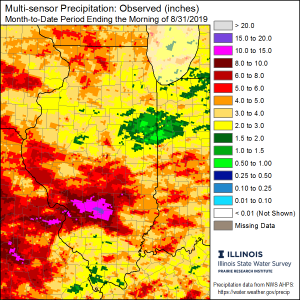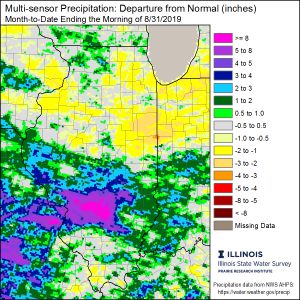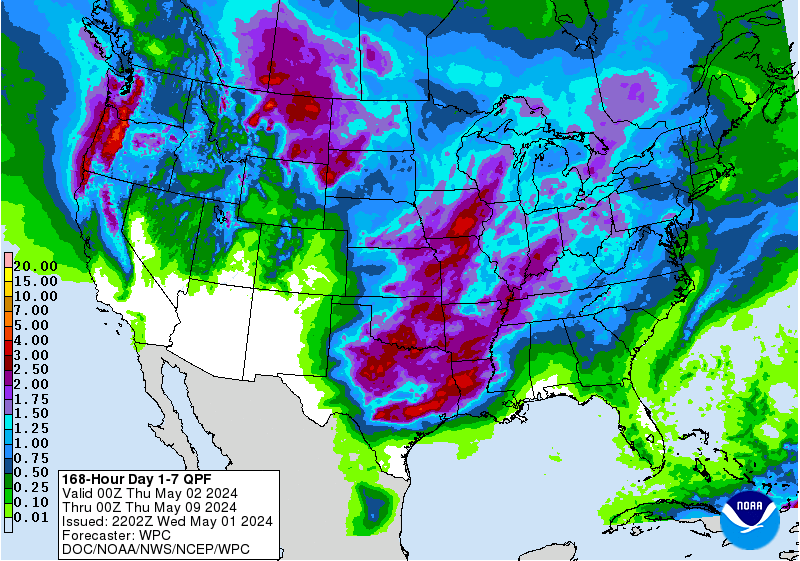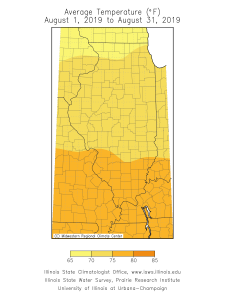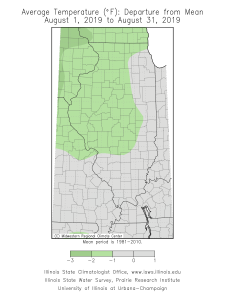Due to significant planting delays across most of the Midwest this year, I have heard many concerns about an early fall freeze and its potential effects on immature crops. Most plants experience damage from a hard freeze or “killing freeze”, which is typically designated by a daily minimum air temperature at or below 28°F. Even in normal growing seasons, an early fall freeze can cause considerable impacts and yield losses for crops. Delayed planting, as was the case this season, increases the risk of freeze damage because crops are less mature going into our normal fall freeze time.
The maps and summary below show first fall freeze dates across Illinois using temperature observations over the period 1979 to 2018. The maps show the earliest and latest fall freeze dates over this 40-year period, as well as the median date, which represents the middle value in the range of dates. The median is preferred over the mean or average, as it is less sensitive to very early or very late freeze dates. Also shown are the 10th (1 in 10 years) and 90th (9 in 10 years) fall freeze dates. All station temperature data were provided by the Midwest Regional Climate Center (https://mrcc.illinois.edu); the shaded areas between stations on the map were interpolated and do not represent actual observations.
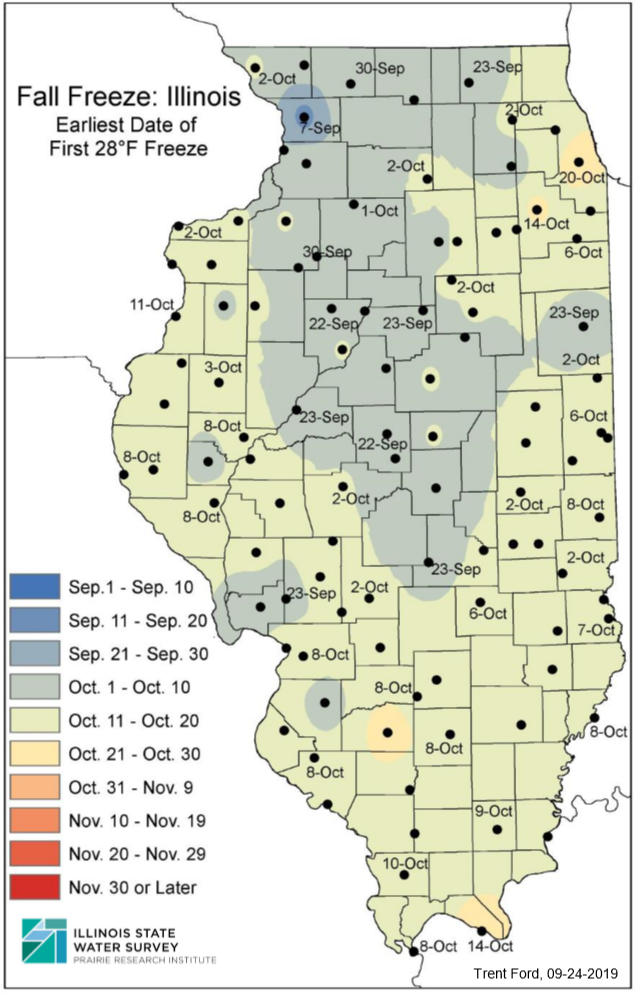
The earliest fall freeze dates over the past 40 years range from late September in northwest and central Illinois, to early October in southern and eastern Illinois. An early freeze anomaly can be seen at the Mt. Carroll station (Carroll County), which experienced a minimum temperature of 27°F on September 7, 1988. Interestingly, the observed all-season Illinois minimum temperature record was broken earlier this year at the Mt. Carroll station (-38°F).
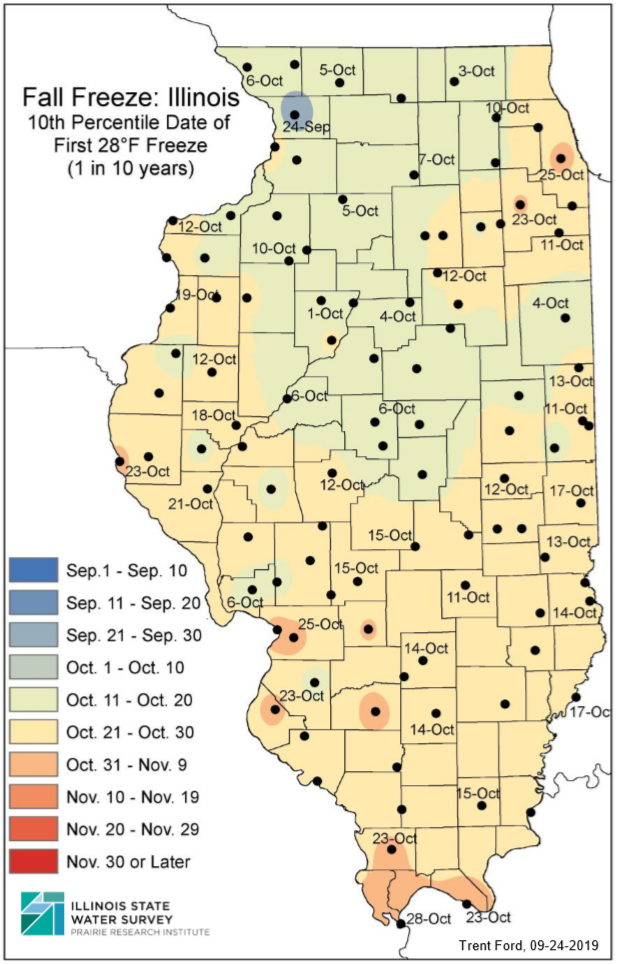
Tenth percentile first fall freeze dates (i.e., 1 in 10 years) range from early October in northwest and central Illinois to mid- to late October in southern and eastern Illinois.
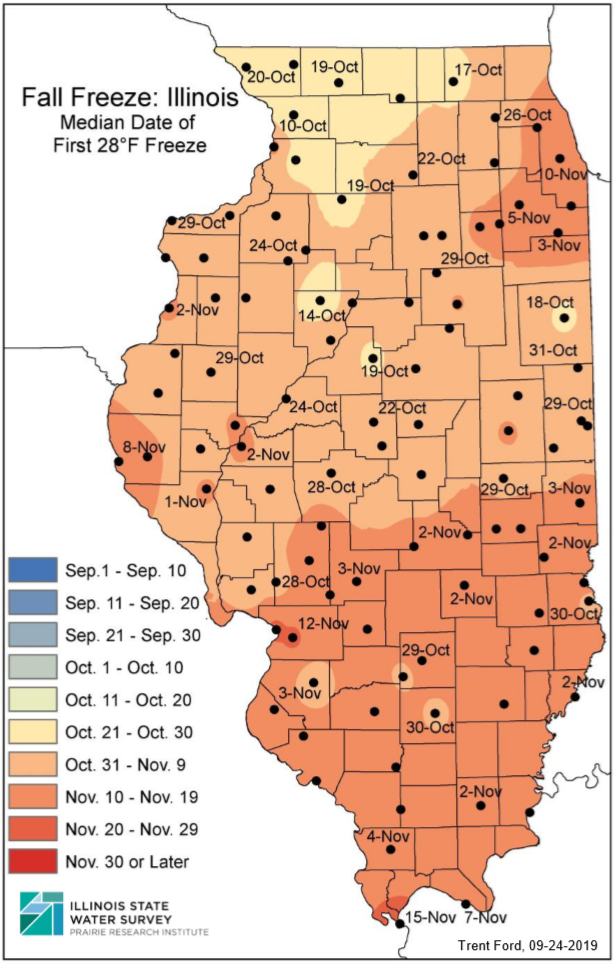
Median first fall freeze dates range from mid- to late October in northwest and central Illinois to late October/early November in southern and northeastern Illinois. Approximately half the years between 1979 and 2018 experienced the first fall freeze before the median dates. Also, the median dates map clearly shows the effects of the developed Chicagoland area on nighttime minimum temperatures. The median first fall freeze date at Chicago Midway is 10 to 15 days later than in some of the collar counties.
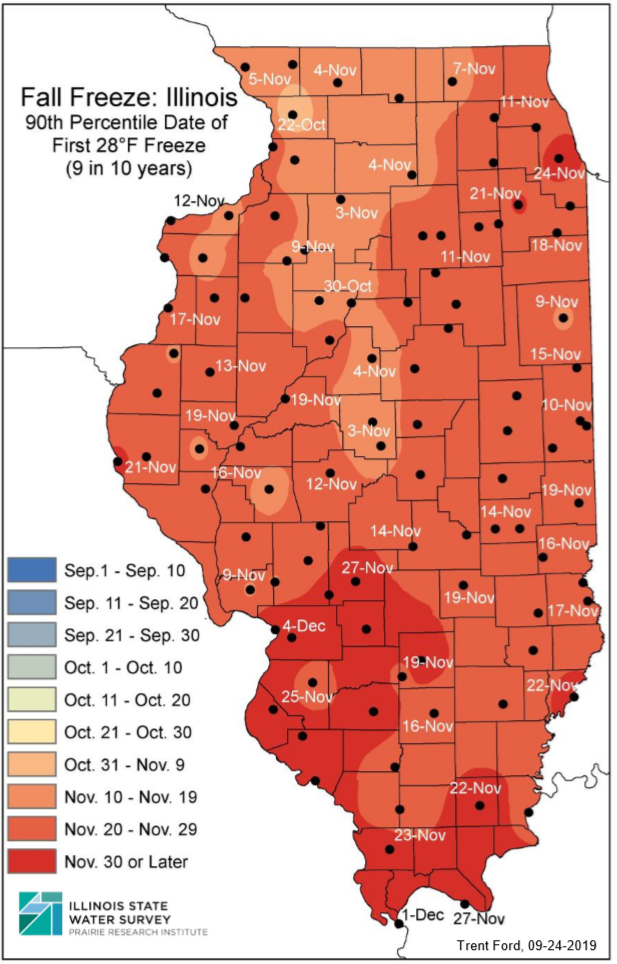
Ninetieth percentile first fall freeze dates (i.e., 9 in 10 years) range from early November in northwest and central Illinois to mid- to late November in southern Illinois. Based on the 40-year climatology, one could say that there is a 90% chance that the first fall freeze on any given year will occur on or before the dates in the 90th percentile map.
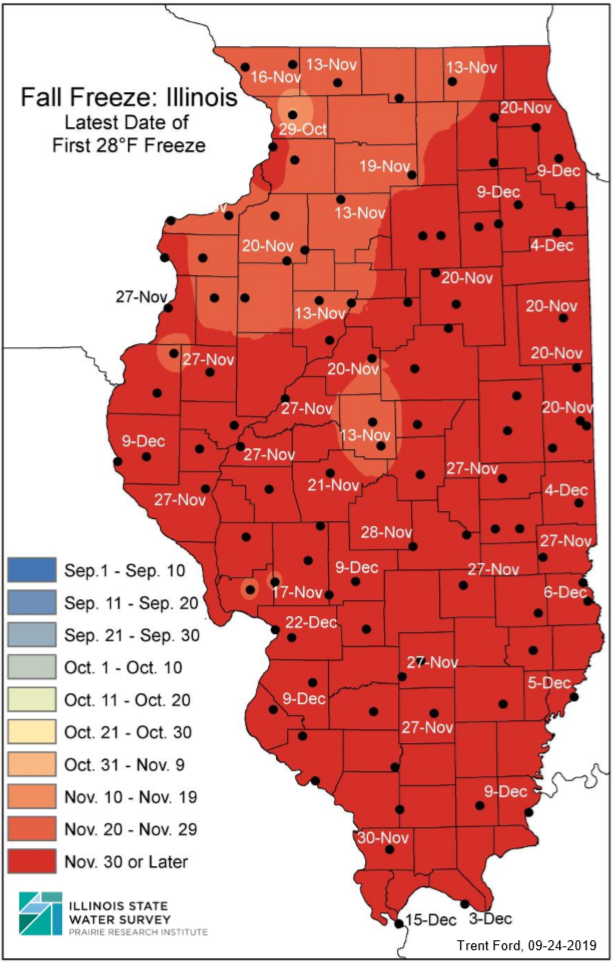
Finally, the latest first fall freeze dates across the state range from mid- to late November in northwest Illinois to early to mid-December in southern Illinois.
Note that air temperatures can vary considerably on smaller or micro-scales. For example, plants near heated buildings or other development can be spared when minimum temperatures dip below the 28°F threshold in the countryside. More information and useful freeze products are provided by the Midwestern Regional Climate Center as part of their Vegetation Impact Program (https://mrcc.illinois.edu/VIP/indexFFG.html). Higher quality, full-page maps can be accessed by clicking the following links:


